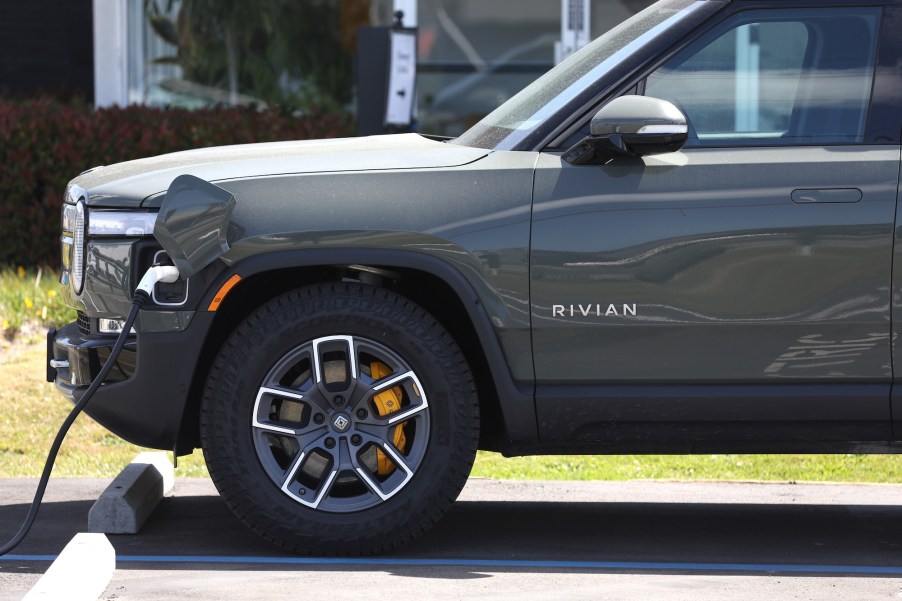
Can you Tow Charge a Rivian?
The potential of running out of battery in your Rivian EV while far from home or a charging station is one reason people have range anxiety. Of course, calling a tow company is an option if you’re ever in this predicament. However, it could be quite the expense, not to mention you’ll wait for a while before the tow truck arrives. There’s also the option of flat towing your BEV if you could find a car powerful enough to handle pulling your EV.
With the inclusion of regenerative braking, your EV doesn’t even have to be towed all the way since it can juice up the battery as it’s being pulled. This is true even for EVs like the Rivian R1S and Rivian R1T. So yes, you can tow charge a Rivian and most other EVs, but there are some caveats.
How to tow charge a Rivian EV

First, you need a towing vehicle powerful enough to pull your Rivian EV and a tow strap that won’t snap due to the vehicle’s weight. Also, the battery in your Rivian should have enough reserve power to shift the car into drive mode from neutral. After all, the regenerative braking capabilities only work with EVs in drive mode.
The Rivian R1T and Rivian R1S have tow hooks at the front and should be pretty easy to attach tow straps. That said, you also need a secure connection on the towing vehicle.
Changing the regenerative braking settings to match the towing car is necessary. If it’s smaller and lighter than your Rivian, it might be a good idea to use lower regenerative braking settings.
Conversely, if you have a powerful vehicle pulling like the Toyota Tundra, you can up the regenerative braking to the maximum for the fastest charging. According to Car and Driver, the Tundra can tow up to 10,200 lbs, so it shouldn’t have any issues with Rivian EVs.
MotorTrend also claims that towing Rivian EVs with their gear selectors in reverse will charge the vehicles almost as fast as the 220 kW DC fast chargers. This implies the manufacturer accounted for tow charging in the design. There’s also another EV with impressive flat-tow charging figures in the form of the Lucid Air. It can purportedly offer 200 kW charging rates if towed at 70 mph with maximum regen activated.
Alternatives to look into if you run out of battery with your Rivian EV
Aside from tow charging and calling a towing company, there’s one other alternative available in select EVs. These include the R1T, R1S, Ford F-150 Lightning, and the Lucid Air. You can use the Bi-directional charging cable to share battery power between vehicles. However, you need at least one of these EVs in the vicinity with enough charge to spare; otherwise, both cars will end up stranded.
Potential issues with tow charging
EVs are significantly heavier than their gas-powered counterparts, primarily due to the weight of their battery packs. This increases the risk of the tow strap snapping or damage to the towing vehicle, especially if it doesn’t have the necessary hitches and hooks. Using a tow bar instead is better since it reduces the chances of breaking. That said, not many people own or carry tow bars in their cars.
Another potential issue is the risk of the tow vehicle and Rivian EV colliding. As such, it’s doubly important that the brakes in both cars be in tip-top condition before trying to tow charge an electric vehicle. MotorTrend also advises against pulling an EV behind an RV since the back current generated by the motor may end up damaging your vehicle.


